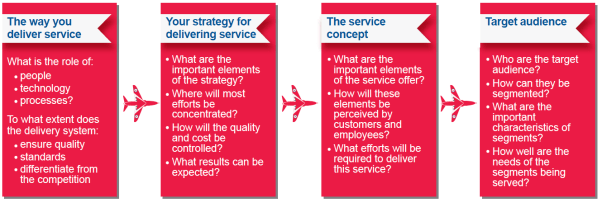All stakeholders in a company must pull in the same direction and work hard to achieve the company’s goals. Investors and employees are key, with around a quarter of business-to-business companies believing that employee research would benefit them.

Stakeholder Engagement
It is no good developing a marketing strategy without all stakeholders being on board. It goes without saying that the strategy will have taken customers’ views into consideration. Engagement by other stakeholders is also important. Investors, neighbors, politicians, journalists and suppliers may have something to say that should be taken into consideration. The stakeholders that we will focus on in this short article are employees.
In 1997 James Heskett, a professor at Harvard Business School, together with co-authors Earl Sasser and Leonard Schlesinger, wrote The Service Profit Chain. This treatise showed how companies such as American Express, Southwest Airlines, Taco Bell and Waste Management (to name but a few) established growth and profit by a good grounding in employee loyalty and satisfaction. Their thesis was straightforward and clear – happy employees provide good service which results in happy customers and in turn generates healthy profits. This is the service profit chain.
Elements Of The Strategic Service Vision

Adapted from Managing In The Service Economy by James L Heskett – Harvard Business School Press. 1986.
Customers have a lifetime value and therefore we want them to return again and again. Working out what creates loyalty is an important part of the marketing strategy. Building in staff incentives and training staff in service delivery should be considered in the plan to foster customer loyalty.
We can only achieve true stakeholder engagement, and particularly employee engagement, if we have the right measures. Researching the views of employees and measuring their satisfaction is relatively easy. Employees have a strong incentive to feedback their views on their employer and how things can be improved to deliver better customer service.
There is a strong argument for carrying out employee research before researching customer satisfaction. Both types of surveys provide measures which can be tracked over time to determine how the strategy is progressing. However, it is useful to know in advance of the customer survey whether the views of employees are aligned with what customers want and are receiving.
Surveys can be carried out on a continuous basis (pulses) or annually. The important thing is to use surveys to measure, monitor and control to make sure that all stakeholders are working towards the same goal.
To learn more about this topic, please visit the following publications:
Employee SatisfactionKeeping Your Ear To The Ground – Stakeholder Consultation


